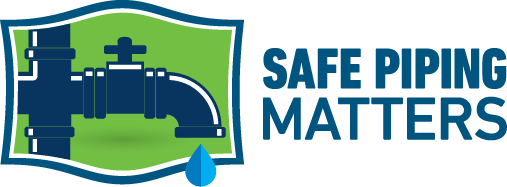Viscoelastic Weaknesses of PVC Pipes
What Engineering Data Reveals
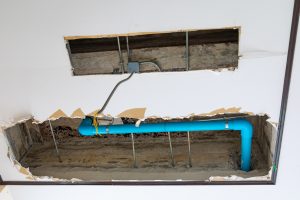 Plastic pipes (primarily PVC and PE) have become widely used in potable water and drain-waste-vent systems. They are marketed for their durability, ease of installation, and lower cost, yet engineering studies and forensic reviews show plastic pipe materials have mechanical behaviors very different from metals. These behaviors introduce long-term performance concerns that designers and contractors must account for when designing systems and specifying materials.
Plastic pipes (primarily PVC and PE) have become widely used in potable water and drain-waste-vent systems. They are marketed for their durability, ease of installation, and lower cost, yet engineering studies and forensic reviews show plastic pipe materials have mechanical behaviors very different from metals. These behaviors introduce long-term performance concerns that designers and contractors must account for when designing systems and specifying materials.
Research on the longitudinal mechanics of thermoplastic pipes demonstrates that pressure cycles, bending, soil movement, temperature changes, and installation stresses interact in ways that can produce failure modes unique to plastics. Recent reviews of real-world failures of plastic pipe systems reinforce these findings and highlight the importance of understanding how plastics age under sustained stress.
Plastic pipes are viscoelastic, meaning their shape and mechanical properties change over time. Under load, they gradually deform. Under sustained strain, internal stresses relax but deformation remains. This time-dependent behavior – creep, stress redistribution, slow crack growth, and embrittlement – must be considered in design. Research shows the long-term stability of plastic pipes depends heavily on environmental conditions and the precision of installation.
Common Failures in Plastic Pipe Systems
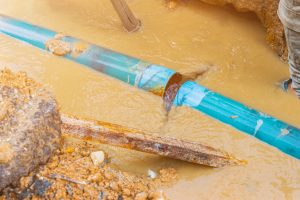 Joint Vulnerabilities: For PVC, PE, and some other plastic pipes, joints are consistently the most common failure location.
Joint Vulnerabilities: For PVC, PE, and some other plastic pipes, joints are consistently the most common failure location.
- Bell-and-spigot joints allow segments to expand and contract. Small assembly errors, such as over-insertion, misalignment, or inadequate lubrication, generate localized stresses that can initiate cracks in the bell or spigot.
- Lever action from deflection can transmit significant prying force to the bell of a push-fit joint. Even modest movement can create hoop stresses that exceed local strength.
- Heat-fused joints require strict control of temperature, pressure, and alignment. Improper fusion, contamination, or excessive pulling forces can weaken the bond and create long-term crack initiation points.
- Solvent-cement joints (used for PVC) behave as fixed connections, but field conditions such as excessive bending or improper cure times compromise long-term bond strength.
Forensic studies consistently find that joint failures initiate at stress concentrators, including scratches, groove marks, poor bedding, point loads, and manufacturing voids. The failure often manifests as slow crack growth, initial microscopic cracks that propagate over years.
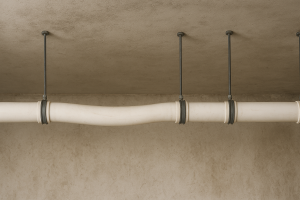 Sagging & Ponding: Many types of plastic are significantly more flexible than metals. This flexibility is helpful during installation but introduces long-term deformation risks.
Sagging & Ponding: Many types of plastic are significantly more flexible than metals. This flexibility is helpful during installation but introduces long-term deformation risks.
- Plastic pipes can sag (deflect) in areas where support is uneven; when buildings or soil settle; or where pipes experience thermal expansion and contraction.
- In gravity systems, these sags create ponding, where solids and wastewater collect, reducing hydraulic efficiency.
- Over time, deflection can contribute to localized bending stresses at joints or fittings, which accelerates crack initiation, particularly in older PVC systems and in PE systems without adequate support.
- Rigid materials maintain slope more consistently. Plastic pipes require careful compaction, soil support, and layout to ensure the slope remains functional over the system’s life.
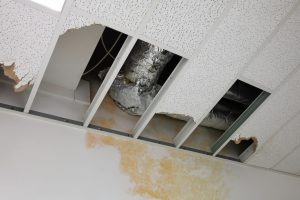 Aging, Toughness Loss & Slow Crack Growth: Both PVC and PE exhibit time-dependent degradation mechanisms, though the details differ.
Aging, Toughness Loss & Slow Crack Growth: Both PVC and PE exhibit time-dependent degradation mechanisms, though the details differ.
- PVC tends to lose ductility over time as its elongation-at-break decreases, making it more susceptible to brittle cracking.
- PE is more resistant to brittle fracture in newer grades (e.g., PE100), but is vulnerable to slow crack growth under sustained stress, particularly if stress concentrators are present.
- Environmental stress cracking (ESC) can occur in both materials when exposed to certain chemicals, surfactants, or disinfectants.
- Temperature cycles accelerate oxidative aging, reducing toughness in both materials.
- Long-term studies show that plastic pipes can fail at stress levels far below their short-term strength when small defects, sustained loads, and environmental aging are present simultaneously.
Design Assumptions vs. Field Conditions
 Plastic pipe manufacturers frequently cite long design lives based on laboratory models that assume controlled, ideal conditions such as:
Plastic pipe manufacturers frequently cite long design lives based on laboratory models that assume controlled, ideal conditions such as:
- Even stress
- Uniform support
- Stable temperatures
- Correct joint assembly
- Absence of defects or point loads
Real buried systems rarely match those assumptions. In the field, plastic pipes are exposed to combined stresses, including:
- Bending from settlement or other changes to support
- Internal pressure fluctuations
- Thermal expansion and contraction
- Installation variability
- Long-term creep and relaxation
Each load may be harmless alone but stresses can become significant when combined. Modern forensic reviews consistently show that failures often originate from the interaction of modest stresses that progressively weaken plastic materials over years of service.
Key Sources
- “A state-of-the-art review on failure mechanisms in buried plastic pipes,” Yadollahi, Seyed and Piratla, Kalyan, Tunneling and Underground Space Technology, Aug. 2025.
- “Influence of wall thickness on the response of gasketed bell and spigot joint in small diameter PVC pipes subjected to a combination of shear, rotation, and diameter changes,” Garcia, David Becerril and Cortex-Perez, Jacinto, Tunnelling and Underground Space Technology, Apr. 2022.
- “Empirical Assessment of Unobserved Heterogeneity and Polyvinyl Chloride Pipe Failures in Water Distribution Systems,” Zamenian, Hamed et al., Journal of Performance of Constructed Facilities, Oct. 2017.
- “Longitudinal Mechanics of Buried Thermoplastic Pipe: Analysis of PVC Pipes of Various Joint Types,” Rahman, Shah and Watkins, Reynold, ASCE Pipelines Conference 2005.
